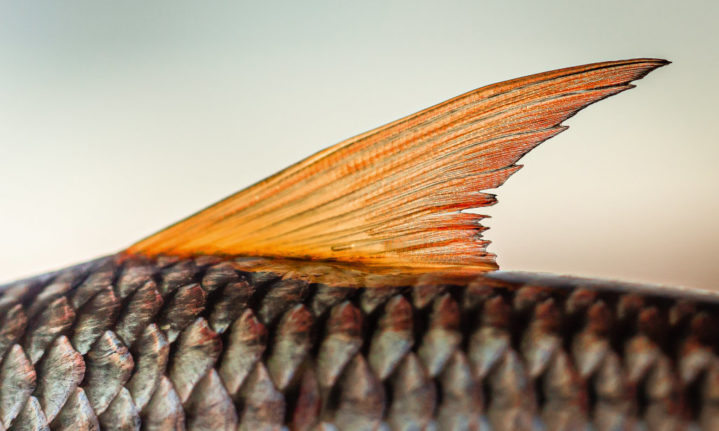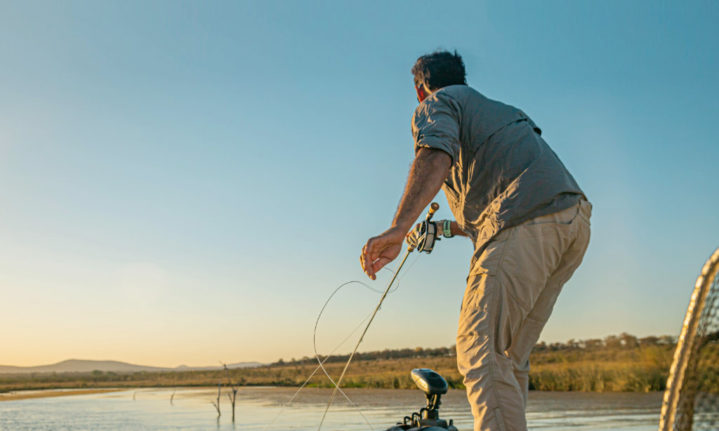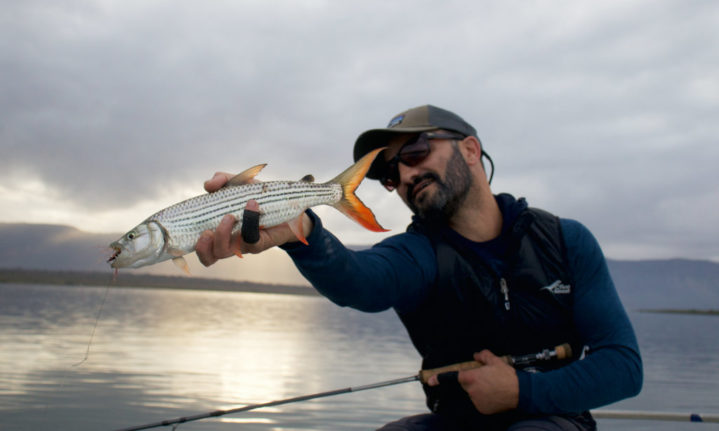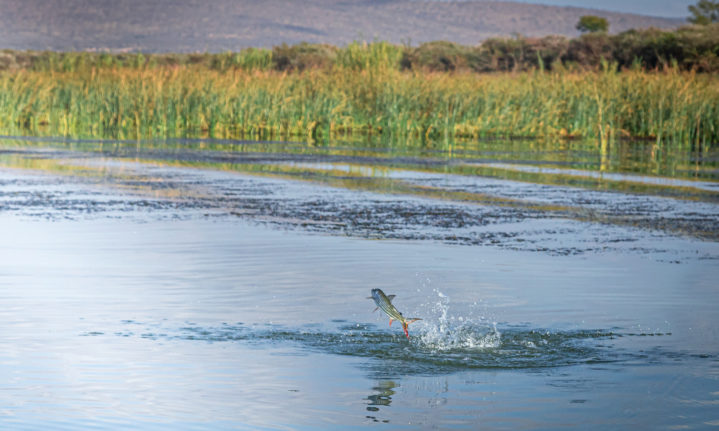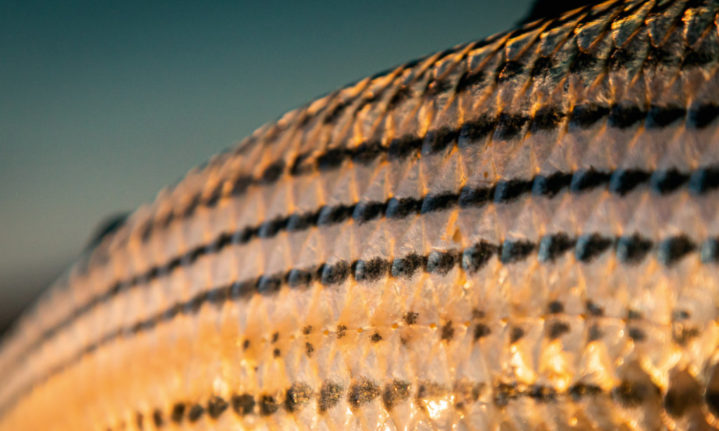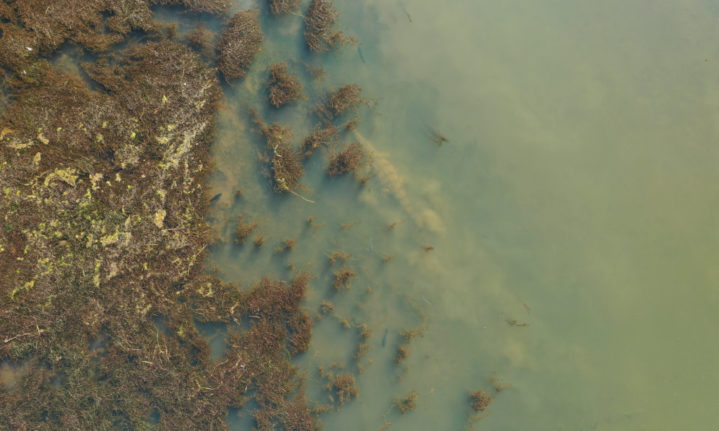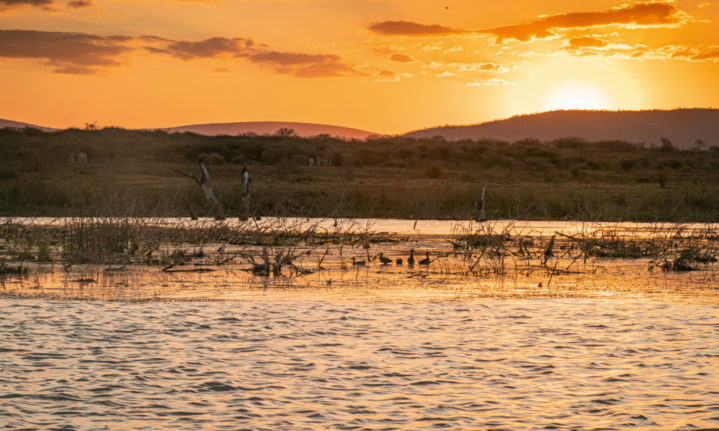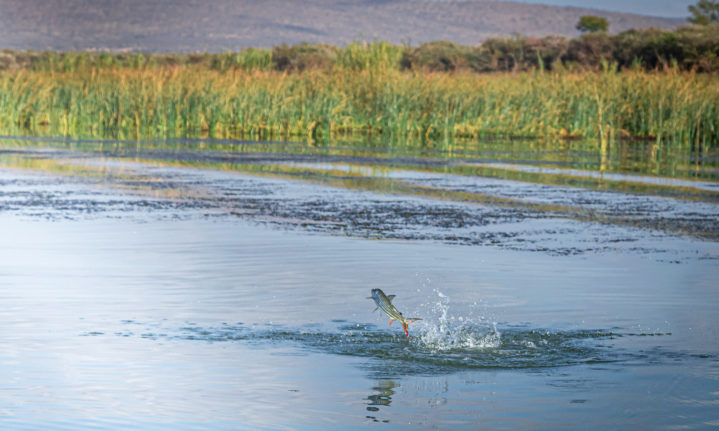Traditionally associated with the Zambezi River and waterways beyond, catching tigerfish on a fly rod without stamping a passport has never been more accessible for South African fishers. KZN’s Lake Jozini boasts the southernmost ‘striped water dogs’.
Words Jazz Kuschke | Photos Gareth Reid
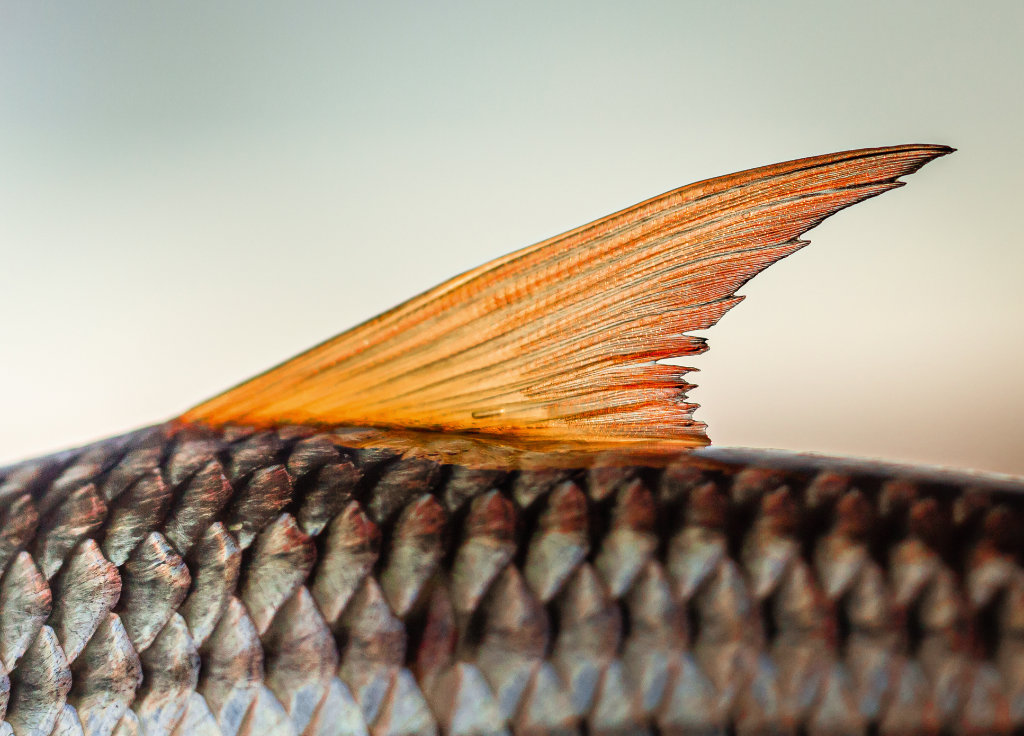
The Hydrocynus brevis is one of five recognised tigerfish species and has a distinctive orange dorsal fin.
We’re tucked up tight into an inlet on the eastern shore of Lake Jozini in northern KwaZulu-Natal. This part of the main dam is characterised by bays lined with sunken trees, dramatic drop-offs and shallow weed beds. To target tigerfish here on fly-fishing tackle, you need a solid boat equipped with a stealthy trolling motor to get into the prime positions. Behind us, the Lebombo Mountains seem to rise right out of the lake. The name of the range is derived from the Zulu word ubombo meaning ‘big nose’ – perhaps in reference to how the Jurassic age volcanic rock juts across the landscape as it forms the border with Swaziland. It’s not a high range, but impressive and moody. In the morning mist it feels kind of mysterious.
And fishy. It feels properly fishy. Each cast with my 7-weight fly-rod is one of intent, an inkling that at any moment I could get a cut burned into my stripping finger, courtesy of a Zambezi double-figure fish.
We’ve already had a fairly productive morning through some upside-down weather: what started out as a warm, misty and windless morning morphed through rain squalls and gusty gales, punctuated by some far-off rolling thunder. Our tally of caught-and- released fish was pushing double figures.
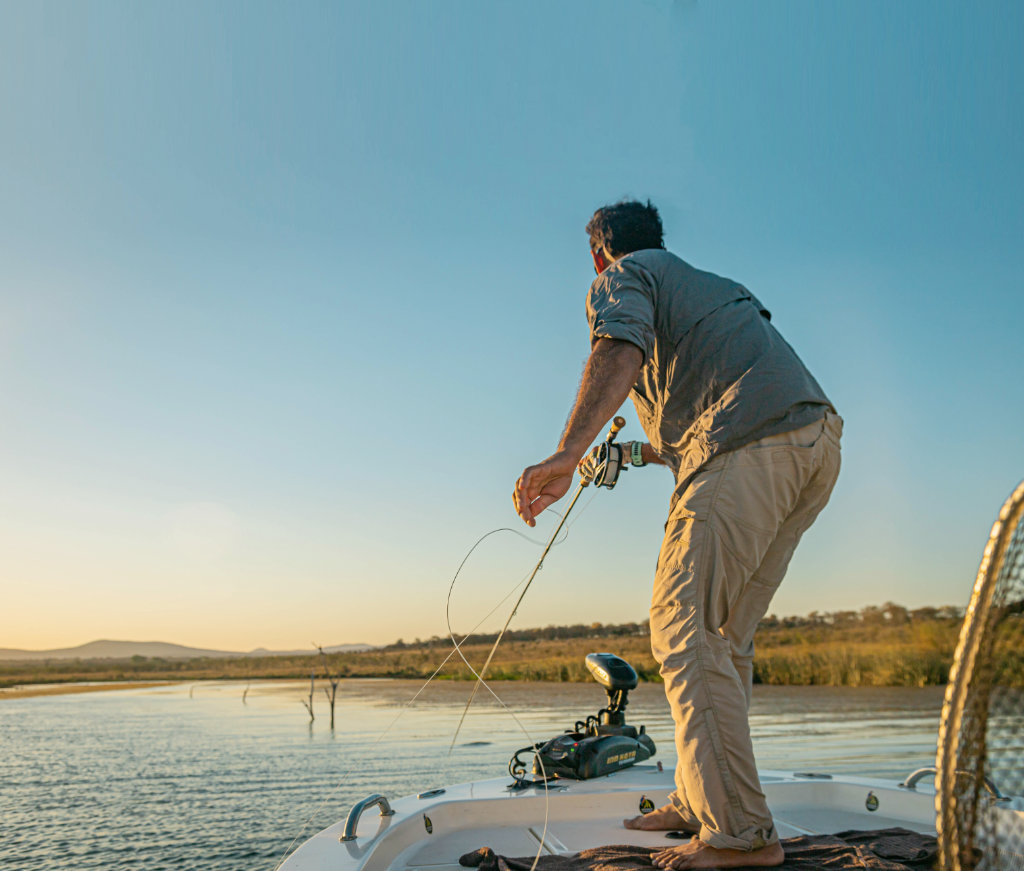
Dawn sessions often produce the best action; the author with a small male tiger.
The average tigerfish caught on Lake Jozini is around 40cm long and goes to about 2lbs (900g). When conditions are right and your casting is pin-point, you can easily jump 10 fish in the two- to three-pound range from out of the dam margins in a session.
The majority of those are feisty males and, while they might be built like the scrumhalves of the team, they tackle like centres and brawl like frontrankers. Anything over five pounds (2.3kg) is a good fish. Almost, dare I say it, the equivalent of a double-figure (in pounds as these are traditionally weighed) fish in the Zambezi. The difference here is that targeting those smaller fish on lighter rods, on the surface, and in technical situations is a helluva lot of fun.
Up on the bow of Mavungana Flyfishing’s custom-outfitted skiff my fishing partner, Jonno Owens, is making casts into the tight pockets right up on the shoreline, while I work the drop-off in the mouth of the bay with a sinking line. I put out a longish cast, throwing one mend to aid with the sink rate, always keeping touch.
On the other end of the 15lb tippet, via a #2 piano wire trace, is a burple (black and purple) brush fly. Unlike the river systems tigers frequent – where there is inevitably a bit of colour – on Pongola one can be fishing tigers in almost gin-clear water. The lack of current also means the fish gets a much better look at the fly as it stays in their kill zone for much longer, aiding the theory that imitative baitfish patterns in the right sizes and colours are most effective.
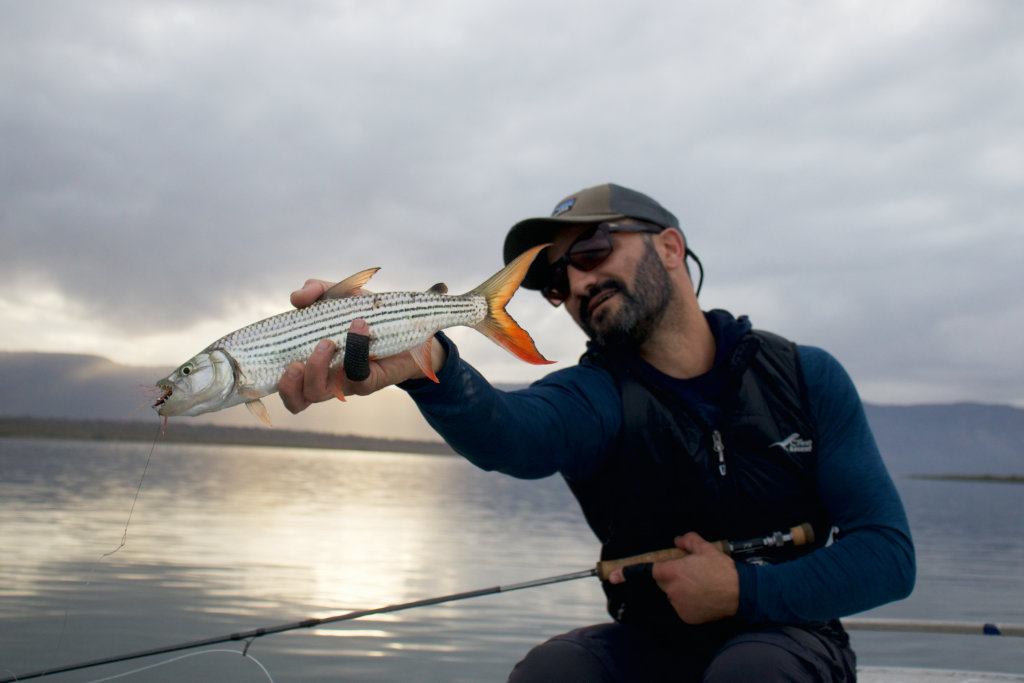
The author with a small male tiger.
As the line straightens I begin the retrieve. I’ve got the line gripped between index and middle finger on the rod handle, with a slow deliberate strip on the other. On the third strip the line stops solid. The take is all power and grit. Annoyance even, but not speed. There is no blistering first run, no straight-to-air. Just brute downward force – an eat unlike I’d experienced from a tiger before.
Two more solid strips and the hook is set. I lift the rod into a solid bend. The fish continues to power down and slightly across. For precious seconds I’m attached, 30 perhaps. Then nothing. The leader had parted as though it didn’t exist. A double figure fish – no doubt in my mind.
It’s a stunned, inconsolable loss on the margin of Swaziland, but then, that is fly-fishing for tigers.
‘Sorry dude,’ says expert guide Jonathan Boulton from the helm of the boat. He knows how much losing a trophy fish like that stings. No other words are needed.
Local is (very) lekker
‘Stalking cruising tigerfish in the shallows, among the weed beds, hippos and crocs of the flooded margins of Lake Jozini, for me is about as exhilarating as it gets,’ Jonathan will tell you when quizzed about his favourite fly-fishing target.
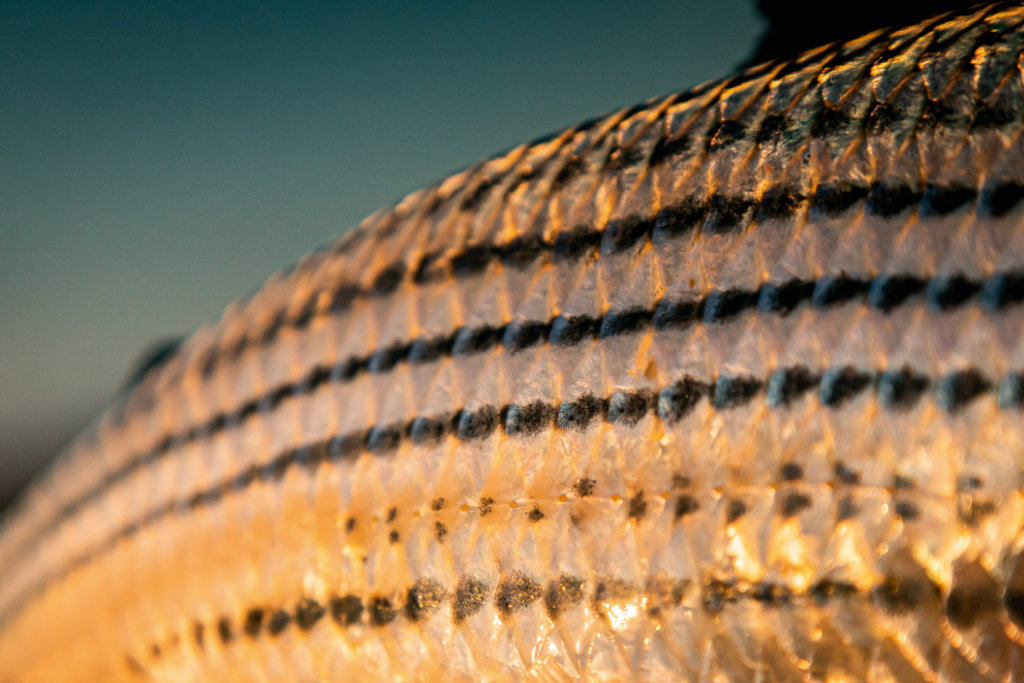
It’s obvious why these striking black-striped fish are called tigers.
Jonathan founded Mavungana Flyfishing in Dullstroom in 1997 and has since run guided trips to target exotic fish species – from Atlantic salmon in Russia to peacock bass in the Amazon and giant trevally in the remote atolls of the Indian Ocean, among others. So, for him to claim the southernmost distribution of the African tigerfish (Hydrocynus vittatus) as his dearest, is a statement to hold on to.
‘I like it because the fishing is more imitative and hunting-like… the water is usually gin-clear and the tigers often feed on very specific species (and size) of baitfish,’ he says.
‘You are constantly changing flies, trimming and removing flash (from those flies) and tying down to lighter leaders.’
South African tigers are limited to a few waterways, most of which are in the Lowveld and flow in, through, or out of the Kruger National Park. Lake Jozini then offers arguably the most accessible homegrown tigerfish water.
Previously called Pongolapoort, at approximately 30km long and 5km wide, it is a serious piece of water. Completed in 1973 in the gorge separating the Lebombo and Ubombo mountain ranges, it was constructed in part of the Pongola Game Reserve – the first proclaimed wildlife area in South Africa. The dam’s water level remained low until it was filled, almost overnight, by cyclone Domoina on 31 January 1984.
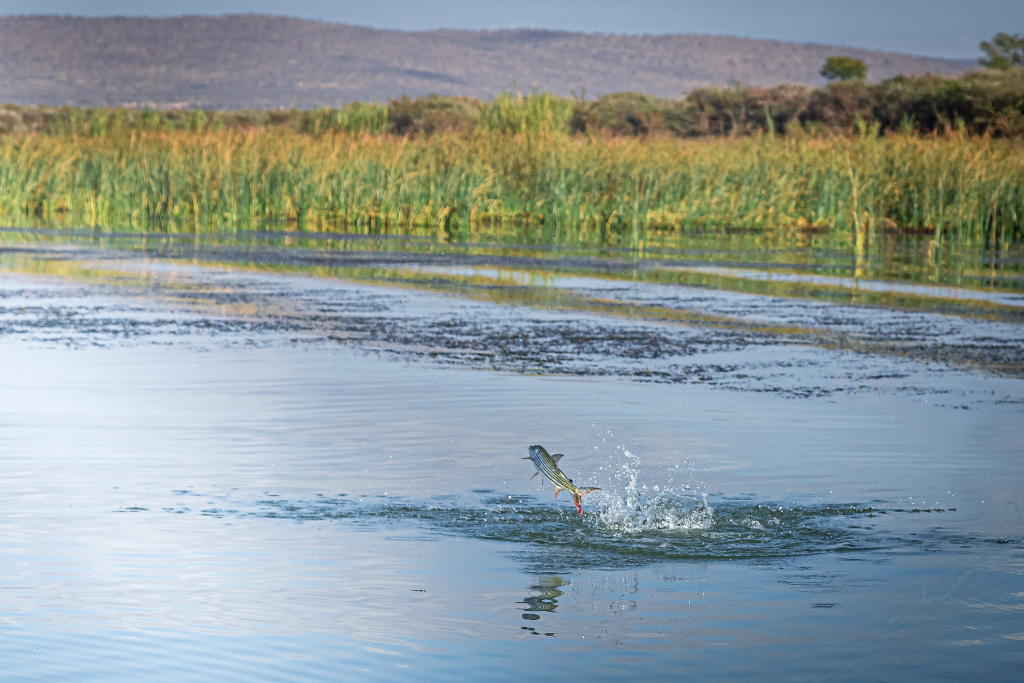
They often take to the air after being hooked.
It remains a wild place today, surrounded by reserves where rhino, buffalo and elephant cruise the banks, and crocs, hippo and tigerfish guard the bays. When the wind gets up (which is fairly often) it becomes wilder still and there have been incidents of boats getting into serious trouble and worse, over the years.
The dam has made a good recovery after four years of bad drought, which saw the level drop all the way down to 21% at times. While not close to its original 100% again, it is now settled and stable and the annual cycle seems to be back in motion. This sees the summer rains from October through January fill it up, with around 20% of the water released during October to help flood the Makatini flats downstream, where small-scale farmers rely on it to irrigate their subsistence crops.
The early season rains are a fertile time in the dam. This (and the increasing water temp) triggers the bigger females to run for flowing water – towards the river and on upriver to a protected section to spawn. The vegetation which grows on the exposed banks during the dry season gets flooded, offering structure for small fish to hide. The hydrilla weed beds are lush, making the margins of the dam even more alive.
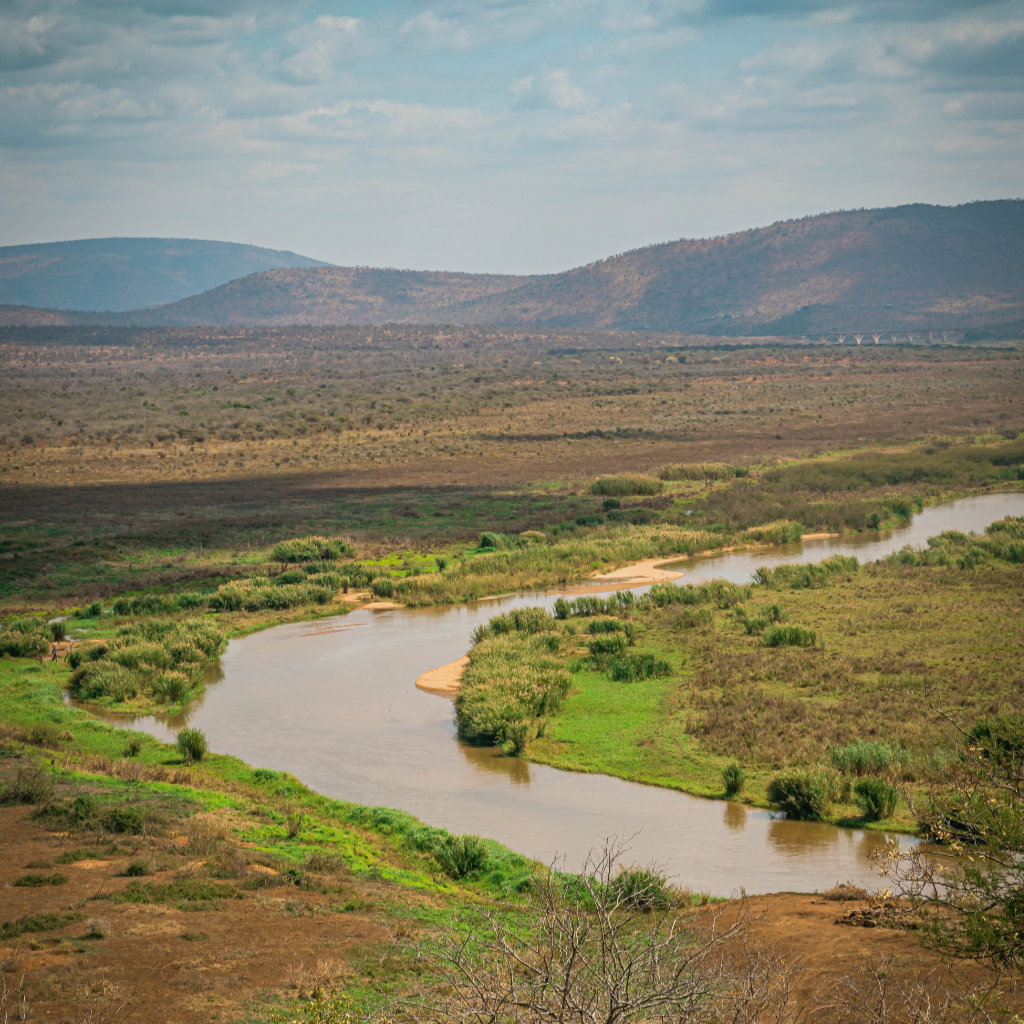
The Pongola River flows into Lake Jozini via an ‘estuary’ section.
‘Seeing a long, closed-off weed bed against the shoreline with just a single opening and knowing tigers will be there to ambush baitfish, gives an extraordinary level of satisfaction…’ Jonathan says. ‘Then, landing a small polar fibre baitfish through the corridor and stripping it back guarantees a take.’
For the Next Generation
Perhaps the most satisfying part for responsible fishers is watching that fish swim off after the duel. All fish caught are treated with the utmost respect by the experienced guides and kept out of the water for the shortest possible time in which to quickly grab a photo.
‘The fly fisher of today knows the threats of global warming, ruthless overfishing and pollution of waterways. We champion the cause of clean waters (both salt and fresh) and healthy fish stocks because we would love our kids to experience what we did,’ Jonathan says. ‘We support conservation initiatives, and partner with lodges that support and develop local communities to look after their ecosystems.’
‘We pursue our quarry as if it’s a matter of life-and-death but once all is said and done, we hold and admire before carefully releasing them to swim again,’ Jonathan concludes.
Swim again indeed, and grow into the behemoths that lurk in the deeper pockets and snap your 15lb tippet as though it’s a spider web. Those fish that make you go back. Time and again.
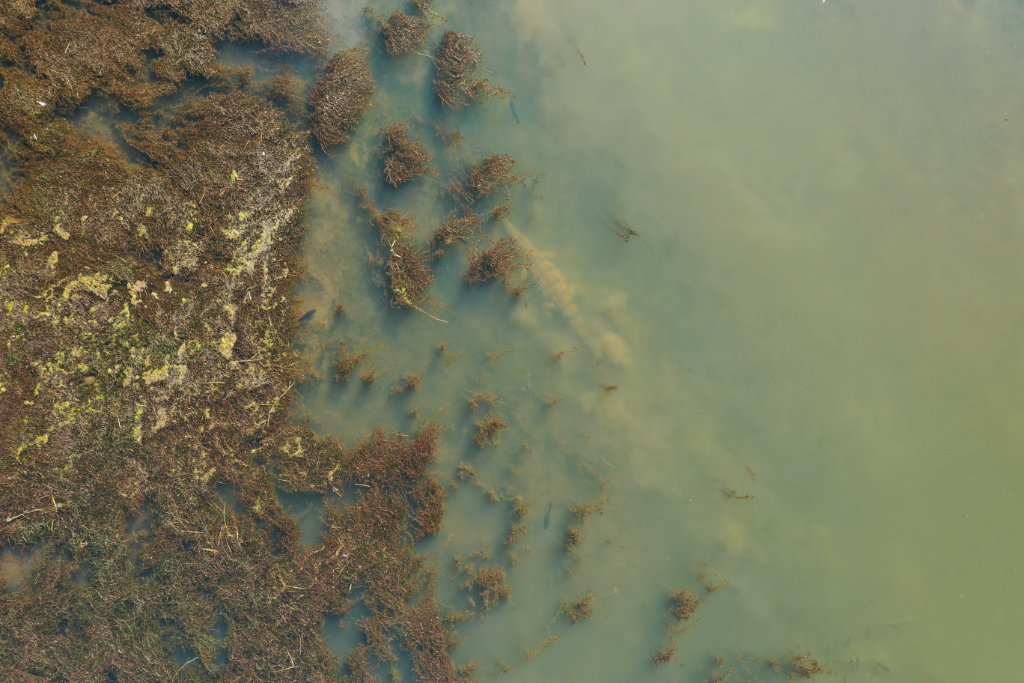
The Pongola Game Reserve surrounding the dam is a birding hotspot and home to four of the Big Five (no lions) – so it’s not just about the fishing.
Trip Planner
Getting There
From Durban: Take the N2 north past
Empangeni and Mkuze, continuing on to Pongola where you turn left at the Pongola Game Reserve Leeukop Gate and follow the Mpalane/Nkwazi signs for 12km.
From Gauteng: Travel to Ermelo, then
follow signs to Piet Retief and
Pongola. From Pongola, travel south on the N2 for 30km; 1km after crossing the Pongola River turn right at the Pongola Game Reserve Leeukop Gate (gate hours are 6am–6pm) and follow the
Mpalane/Nkwazi signs.
Do It
Mavungana Flyfishing runs a four-day, five-night fishing safari at Lake Jozini based out of Nkwazi Lake Lodge in Pongola Game Reserve. This costs R19 950 pp sharing, which includes accommodation, all meals, teas and coffee, boats with unlimited fuel, and guided fishing. If you’re worried you won’t do well on fly, the lodge has spinning and live bait gear available, too. But here’s a tip: if your casting is up to scratch and you listen to your guide, you’ll outfish the conventional gear guys, with a fly rod, every time. flyfishing.co.za/trip/shallow-water-tigers-pongola
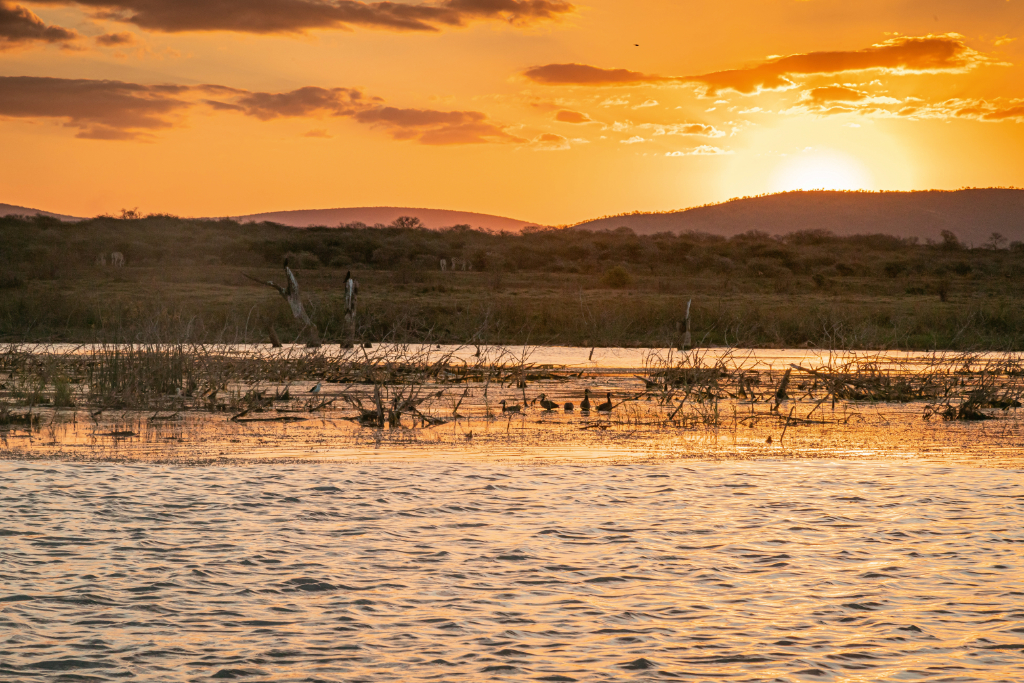
Need To Know
The best time to go is May–June and August–October.
You will need:
• 7-, 8- or 9-weight quality fast action rods with matching reels.
• Tropically rated DI7 or shooting head fly lines with a second rod rigged with an intermediate or floater and a 20–25lb straight mono leader.
• Thin piano wire trace material.
• Assortment of Mavungana Flyfishing custom-tied tiger clousers and brush flies.
• In addition, you can pack a 5/6 fast-action rod, matching reel and floating line for tilapia, as well as a selection of dry-flies and nymphs.









